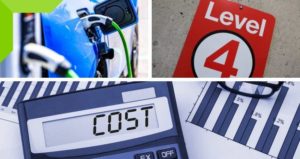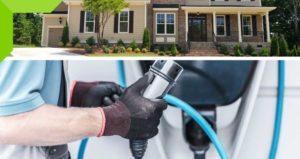EVs have been around for many decades, but the time required to pump energy into their batteries is still much. After all, gasoline vehicles seem to have an edge as they need only a few minutes to refill, while EVs may require hours. Who wants to wait that long? But fortunately, evolving technologies are reducing charging durations.
The level 4 charger is an addition: it has unprecedented pace and prowess to fill up EV batteries. But there is a heap of confusion regarding its working, benefits, and uses. We will cover the maximum aspects of this blog to get rid of those. Read on.
What Is a Level 4 EV Charger?
As the name implies, the level 4 charger refers to the system that offers the fourth – and currently, the fastest and latest – ‘speed’ at which an EV can be charged. As opposed to the first three levels, the level 4 charger can deliver a tremendous over one megawatt of power that can fully charge a common EV within no more than 20 minutes, on average. Nowadays, these chargers can are found where EVs with huge batteries, such as trucks and lorries, are used.
Read: Can You Leave an Electric Car Plugged in Overnight?
How Does the Level 4 EV Charger Work?
Before we dig deeper into the working of the level 4 EV charger, it would be pertinent first to have the basic know-how of the previous levels to understand better.

The level 1 and 2 EV chargers utilize alternating current (AC); however, the former provides only 120 volts, while the figure for the latter is 240. And since higher voltages can charge batteries at a faster rate, the level 2 charger takes the lead by charging an average EV in eight hours, while the level 1 can take more than a full day. Hence, the former is designated level ‘2’ because of its nimbleness over level ‘1’ (it is somewhat analogous to the gear system in cars: the faster a gear is, the higher its level).
On the other hand, the level 3 EV charger works using direct current (DC) and can deliver around 500 volts. As there is lesser resistance in DC than in AC and the voltage is higher too, the combined effect can charge an EV up to 80% in just half an hour. And then, the level 4 charger follows: having direct access to the power grid, employing DC, and carrying above thousand volts, these chargers generate enormous power to replenish an EV’s battery power at the fastest possible rate yet.
Looking at the following ins and outs of all chargers levels will make it easier to understand.
| Charger Level | Current Type | Voltage (V) | Power (kW) | Avg. Charging Time/250 miles | Avg. Range Added/Min of Charging (miles) | Connector Type |
| 1 | AC | 120 | 2.4 | 43 hours | 0.1 | J1772 |
| 2 | AC | 240 | 3-19 | 11 hours | 0.4 | J1772 |
| 3 | DC | Around 500 | 50-350 | 60 minutes | 3.2 | CHAdeMO |
| 4 | DC | 800-1,000 | >1,000 | 20 minutes | >22 | CHAdeMO 2.0 |
How Much Does the Level 4 EV Charger Cost?
Unfortunately, due to the sophisticated structure and power requirements at par with the grid, level 4 EV chargers cost a lot.
As per Forbes, EV DC chargers are very costly, and even if a house is equipped with over 400 volts of electricity supply, installing these will most probably cost more than the EV itself. Based on this fact, since the level 4 EV chargers are the most high-end operators, they can charge a pocket tens of thousands of dollars.

Also, note that using a level 4 charging might be the most expensive way to top up your EV. Right now, level 2 charging costs 0.2 to 0.25 USD per kilowatt-hour, while level 3, which is faster, is priced at 0.4 to 0.6 USD. The level 4 charger being even quicker can increase the cost further.
Read: How Much Do Electric Car Batteries Cost?
How Many Companies Manufacture the Level 4 EV Charger?
Currently, only one company is known to manufacture level 4 EV chargers: Tesla. The company’s ambition was on the cards for some years. The groundbreaking of the first station containing level 4 chargers occurred in the Gigafactory Nevada last year, finally opening the doors of the fastest known charging rates to the EV world.

The company is expected to install several Megachargers all over the US (it is already done with the Frito-Lay facility in California back in January).
As the trend kicks in, competitors may show up, increasing the number of level 4 charger manufacturers.
| Fact!
Tesla named its level 4 charger ‘mega-charger’ because of its capability to deliver over one megawatt of power. |
Can You Install a Level 4 EV Charger at Home?
As per several reports and findings, level 4 EV chargers are only available for public use, and the number of facilities, even in those is minimal. Moreover, as discussed, these chargers need a direct connection from the grid to generate such fast charging, making it very difficult to have one at home. The final straw is laid by the expenses. Even for the level 3 chargers, hypothetically, they can be installed at home; but in reality, it might not be as easy because of the price and complexity associated.

So, currently, you cannot install a level 4 EV charger at home due to its unavailability despite one’s potential to cover the expenses and cater to the high power requirements. However, over time, these chargers might become available for residential use.
Read: How to Charge Electric Cars at Home?
Is the Level 4 EV Charger Worth It?
Absolutely. Charging an EV within only a short time is a surefire boon. Suppose you are a busy person with many business activities going on that need frequent movements. In that case, such fast chargers will benefit greatly whether you install one at home or go for public charging stations. Also, installing a level 4 charger can help get tax incentives too.

However, the problems of cost and availability persist. The level 2 and level 3 chargers are the best choices until the issues are resolved.
Does the Level 4 Charger Affect EV Batteries?
It can. As per KIA motors, using DC fast charging often can negatively impact an EV battery’s performance and longevity.
Moreover, the manufacturer also recommends not using such chargers too much. And since the level 4 chargers also carry DC, they can cause a similar effect.
Batteries do well when kept at normal temperatures, but when we pull much energy into them within a short period – as in the case of the level 3 and 4 charging – heat stresses generate, shortening the lifespan. The more frequent such charging is, the faster the EV battery will deteriorate.

In a recent study, two pairs of EVs of similar make and model were driven 50,000 miles and checked for battery capacity afterward; however, note that one pair was charged using level 2 chargers only while the other received level 3. The former pair lost around 23 percent of the battery capacity, while the latter lost 27 percent.
Summing Up: What Is a Level 4 EV Charger?
The freshest addition to the EV chargers, level 4 is the quickest charging solution. Working at extensive voltage, utilizing the fast DC mode, and delivering power by crossing the mega prefix, this level of EV charging can top up the battery in less than 20 minutes.
Read: How to Increase Electric Car Range?
Though some unavailability concerns continue, the rollout of the level 4 chargers in the EV world is a huge milestone. With time, the system might be available to masses and different types of vehicles other than trucks and lorries. And with better charging time and reduced range anxieties, people might go for EVs in bunches, bolstering the green technologies.


